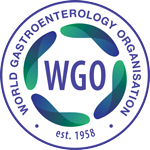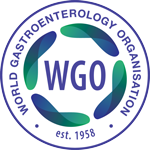Misuse of Proton Pump Inhibitors: Time for PPI Stewardship
Vol. 29, Issue 3 (September 2024)
 Vaneet Jearth, MD, DM
Vaneet Jearth, MD, DM
Department of Gastroenterology
Postgraduate Institute of Medical Education and Research
Chandigarh, India
 Amit Dutta, MD, DM
Amit Dutta, MD, DM
Department of Gastroenterology
CMC Vellore
Vellore, India
 Vishal Sharma, MD, DM
Vishal Sharma, MD, DM
Department of Gastroenterology
Postgraduate Institute of Medical Education and Research
Chandigarh, India
Proton pump inhibitors (PPIs) are among the most commonly prescribed medications globally, and they have revolutionised the management of acid-related disorders, gastrointestinal bleeding, hypersecretory disorders, and other conditions.1 PPIs are effective and appropriate for specific indications, but they are also widely used “off-label” for other purposes.2 Overtreatment for functional dyspepsia, gastroesophageal reflux symptoms, stress ulcer prophylaxis in non-critically ill patients, and prophylaxis against ulcer/bleeding from stomach associated with corticosteroids, anticoagulants, and antiplatelets are the most frequent instances of inappropriate PPI use (Table 1).3, 4 PPIs are generally well tolerated; nevertheless, treatment for more than four to eight weeks is rarely recommended.4, 5 However, evidence also indicates that these drugs are used for longer than the recommended duration of therapy and higher than the recommended dose. Analysing 65 studies in 23 countries, a recent systematic review of global trends and practices of PPI use identified over 28 million PPI users in the general population (nearly one-quarter of adults use a PPI). Nearly two-thirds of users were on high doses (≥ defined daily dose). 25% of users used PPIs for more than a year, and 28% used them for more than three years.6 The therapeutic inappropriateness associated with PPI use during the last three decades cannot be solely attributed to the replacement of histamine 2 receptor antagonists (H2RAs) with more potent PPIs. The utilisation of PPIs is increasing in both Western and Eastern countries, as well as in both pediatric and adult populations, despite the fact that most of their indications have remained unchanged for many years.2, 6
Table 1: Most common situations of PPI inappropriate or overuse
| Most common situations of PPI inappropriate or overuse |
| Undifferentiated abdominal pain |
| Isolated lower gastrointestinal symptoms |
| Functional dyspepsia with no sustained response to PPI therapy |
| Stress ulcer prophylaxis in non-critically ill inpatients |
| Gastroprotection with single antiplatelet agent without additional risk factors of GI bleed |
| Gastroprotection with anticoagulant without additional risk factors for gastrointestinal bleed |
| Ulcer prophylaxis with steroids |
| First line therapy with pancreatic enzyme replacement therapy (PERT) |
| Co-prescription with bisphosphonates |
| Empiric treatment of laryngopharyngeal symptomatology |
| Co-prescription with antibiotics |
Major contributors to the misuse of PPIs include the attitude of prescribing primary care provider who often view them as harmless and a one-stop solution for any gastric issue or drug-related adverse effect; the availability of PPIs over-the-counter; the practice of self-medication; the failure to establish a timeline for deprescribing PPIs after the recommended duration; and the availability of generic drugs that reduce cost. Misuse of PPIs can have serious repercussions, such as increased healthcare costs, adverse drug reactions, and gastric acid rebound after stopping the PPI.5 In this this review we attempt to summarise the clinical ramifications of inappropriate use of PPIs and address the principles of deprescribing PPIs.
Clinical Ramifications of PPI misuse
Although PPIs have significantly transformed the management of specific gastrointestinal disorders, it is critical to recognise their limitations and recognise situations in which their application may be ineffective or even detrimental. In their prospective observational cross-sectional study of hospitalised patients in the emergency department, Nguyen et al. found that one-third of patients were using PPI inappropriately.7 Sattayalertyanyong et al. analysed PPI-using hospitalised patients in a study with a similar approach, and they found that nearly half of the patients had received prescriptions without a valid indication.8 According to a recent retrospective review, approximately 37.8% of patients admitted with lower gastrointestinal bleeding were started on a PPI during their stay. For those patients, 46% had no indication for a PPI and 85% had not been recommended to begin a PPI by GI consultants.9 Recent systematic review and meta-analysis on inappropriate use of PPIs in clinical practice globally analysed 79 studies, including 20,050 patients, and reported that pooled proportion of inappropriate overuse of PPI was 0.60 (95% CI 0.55 to 0.65, I2 97%).10
PPIs are relatively safe drugs when used for short term with reported minor adverse effects including headache, rash, dizziness, and gastrointestinal symptoms such as nausea, abdominal pain, flatulence, constipation, and diarrhoea.11 However, one clear risk with the short-term use is increased risk of enteric infections.12 The majority of adverse effects associated with long term PPI use are due to desired drug effect that is increased gastric pH, hypochlorhydria and in some cases to achlorhydria. Over the last decade, numerous observational studies and meta-analyses have shed light on the long-term use of PPIs and potential risks in various patient populations. Prolonged administration of PPIs has been linked to a number of severe and infrequent adverse effects, such as stroke, myocardial infarction, renal disease (including acute interstitial nephritis, acute kidney injury, and end-stage renal disease), hepatic disease (including spontaneous bacterial peritonitis, hepatocellular carcinoma, and hepatic encephalopathy), fractures and infections (including Clostridium difficile infection, community-acquired pneumonia, COVID-19), micronutrient deficiencies (hypomagnesemia, anaemia, vitamin B12 deficiency, hypocalcaemia), dementia, and neuroendocrine tumours and carcinomas of the gastrointestinal tract.13-15 Therefore, the long-term side effects of PPIs are a considerable concern for malnourished, aged, chronically ill, immunocompromised, and osteoporotic individuals. Inappropriate use of PPIs (overuse or misuse) raises healthcare costs and increases the risk of polypharmacy. Drug interactions are a crucial and frequently forgotten factor, and several studies have looked into the potential interaction between PPIs and antiplatelet agents. However, given the inherent limitations of observational studies and the subsequent meta-analysis that included these studies, we should exercise caution when extrapolating broad inferences about some of these associations with the existing level of evidence.
Deprescribing PPIs
Safe and effective PPI therapy requires awareness of best practice guidelines pertaining to PPI use on the part of primary care provider and relevant patient education.4, 13 The "primum non nocere" oath is the first and most important precept of drug administration, and this also applies to PPIs. Deprescribing a drug refers to the clinically supervised procedure of discontinuing or reducing the dose of medication when it causes harm or no longer provides benefit. Inappropriate indication, the presence or risk of adverse events, drug interaction, drug-disease interaction or patient preference are all potential triggers for deprescribing PPIs. Deprescribing PPIs entails dosage reduction, discontinuation, or transition to 'on-demand' administration, guided by the principle of employing PPIs at their minimum effective dose for the shortest duration possible.3, 4
However, de-prescribing can be difficult, especially when the drug, such as PPI, does not appear to have any visible side effects or takes a long time to exhibit them. Deprescribing PPIs in routine clinical practice is hampered by a number of factors, and there are still significant gaps in our understanding of the best deprescribing strategy in different clinical contexts. Given the scarcity of published deprescribing trials, the existing evidence is often of poor methodological quality.2, 3, 5 De-prescription becomes easier if the intended duration of therapy is discussed at the time of the first PPI prescription. Figure 1 explains steps of deprescribing PPIs.
Importantly, the first step is to revaluate the PPI indication on a regular basis and document the indication. The burden for reviewing falls on the patient's primary care provider, but any clinician with time, knowledge, and determination, whether a cardiologist, hospitalist, family physician, or nurse practitioner, can deprescribe PPIs. It is also crucial to note that deprescription is rarely urgent in most cases, and the decision to quit PPIs should be based simply on the lack of an indication for PPI usage, rather than anxiety about PPI-associated adverse effects. Long-term PPI medication may be justified if the benefit clearly justifies the possible risks. Patients with Barrett's oesophagus (BE), severe esophagitis grade C or D, Peptic strictures, Zollinger-Ellison syndrome, eosinophilic esophagitis, history of bleeding GI ulcer, or bleeding risk with prolonged NSAID usage should continue taking PPIs or visit their treating physician before discontinuing them (Table 2).2, 4, 5, 13
Table 2: Indications for long term PPI use (>8 weeks)
| Indications for long term PPI use (>8 weeks) |
| Barrett’s esophagus |
| Peptic stricture |
| Zollinger-Ellison syndrome |
| Gastroprotection in long term users of NSAID/antiplatelets/anticoagulants/steroids with additional risk factors for GI bleed |
| Severe esophagitis (LA grade C and D) |
| Eosinophilic esophagitis |
| Refractory steatorrhea in chronic pancreatic insufficiency with PERT |
| Documented history of bleeding GI ulcer |
It is imperative to allow the patient sufficient time to deliberate on the available options while also ensuring that they are assisted without coercion. If PPI use appears to be inappropriate, a discussion between the healthcare professional and the patient must ensue discussing contemplation and methods for deprescribing. Talking about “a trial of de-prescribing” is an effective way to secure patient acceptance, as it reassures patients that the PPI can be reintroduced if symptoms return. Both dose reduction and abrupt discontinuation strategies have demonstrated comparable outcomes for de-prescribing PPIs.4, 13 The strategy should be tailored to each individual and customisable. Patients on a twice-daily PPI should be considered for de-escalation to a once-daily dose of PPI, particularly those with GERD. In a trial of 117 individuals receiving higher-than-normal dosages of PPIs for GERD, 80% effectively transitioned to regular doses of PPI without substantial recurrence of symptoms or the need to increase the PPI dose.16
Patients who cease long-term PPI therapy should be informed that rebound acid hypersecretion may cause transient upper gastrointestinal symptoms. In lieu of continuous PPI therapy, the administration of H2RAs, neutralising antacids, lifestyle modifications or on-demand PPIs may prove beneficial in managing symptoms temporarily in such patients. Any recurrence of symptoms should be discussed with the patient during a four-week review following discontinuing PPI therapy.
There is an unmet need for high-quality, long-term evidence-based initiatives in deprescribing PPIs. Current evidence, albeit of low quality, suggests that deprescribing is harmless, with the benefits of reduced pill burden, lower health care costs, and potentially fewer long-term adverse effects.2, 5
Conclusion
Inappropriate and longer than recommended use of PPIs continues to contribute to the global epidemic of PPI misuse. Incorporating preventive measures at the time for prescribing PPIs for the first time can substantially reduce PPI misuse. These measures should consist of a clearly documented indication, a treatment duration plan, and a predetermined review date to re-evaluate the necessity for continued treatment. The decision to continue or deprescribe PPIs should be patient centric and based on evidence of risk or benefits. As prescribers, we should prioritise avoiding needless long-term prescriptions, particularly for patients who started PPI therapy for inappropriate reasons. Deprescription of PPIs requires a systematic approach and health care providers must be well versed with best practice guidelines in order to confidently explain the choice to patients.
References
- Schnoll-Sussman F, Niec R, Katz PO. Proton Pump Inhibitors: The Good, Bad, and Ugly. Gastrointest Endosc Clin N Am. 2020;30(2):239-25
- Dharmarajan TS. The Use and Misuse of Proton Pump Inhibitors: An Opportunity for Deprescribing. J Am Med Dir Assoc. 2021;22(1):15-22.
- Mari A, Marabotto E, Ribolsi M, et al. Encouraging appropriate use of proton pump inhibitors: existing initiatives and proposals for the future. Expert Rev Clin Pharmacol. 2023;16(10):913-923.
- Targownik LE, Fisher DA, Saini SD. AGA Clinical Practice Update on De-Prescribing of Proton Pump Inhibitors: Expert Review. Gastroenterology. 2022;162(4):1334-1342.
- Helgadottir H, Bjornsson ES. Problems Associated with Deprescribing of Proton Pump Inhibitors. Int J Mol Sci. 2019 Nov 2;20(21):5469.
- Shanika LGT, Reynolds A, Pattison S, Braund R. Proton pump inhibitor use: systematic review of global trends and practices. Eur J Clin Pharmacol. 2023;79(9):1159-1172.
- Nguyen PV, Tamaz R. Inappropriate Prescription of Proton Pump Inhibitors in a Community Setting. Can J Hosp Pharm. 2018;71(4):267-271.
- Sattayalertyanyong O, Thitilertdecha P, Auesomwang C. The inappropriate use of proton pump inhibitors during admission and after discharge: a prospective cross-sectional study. Int J Clin Pharm. 2020;42(1):174-183.
- Quinn AJ, Saven H, Haile R, Moon SJ, Lee A, Thor S. Inappropriate use of proton pump inhibitors in hospitalized patients with lower gastrointestinal bleeding. Hosp Pract (1995). Published online March 5, 2024.
- Dutta AK, Sharma V, Jain A, et al. Inappropriate use of proton pump inhibitors in clinical practice globally: a systematic review and meta-analysis. Gut. Published online April 26, 2024.
- Yibirin M, De Oliveira D, Valera R, Plitt AE, Lutgen S. Adverse Effects Associated with Proton Pump Inhibitor Use. Cureus. 2021 Jan 18;13(1):e12759.
- Hafiz RA, Wong C, Paynter S, David M, Peeters G. The Risk of Community-Acquired Enteric Infection in Proton Pump Inhibitor Therapy: Systematic Review and Meta-analysis. Ann Pharmacother. 2018;52(7):613-622.
- Dutta AK, Jain A, Jearth V, et al. Guidelines on optimizing the use of proton pump inhibitors: PPI stewardship. Indian J Gastroenterol. 2023;42(5):601-628.
- Choudhury A, Jena A, Jearth V, et al. Vitamin B12 deficiency and use of proton pump inhibitors: a systematic review and meta-analysis. Expert Rev Gastroenterol Hepatol. 2023;17(5):479-487.
- Jaynes M, Kumar AB. The risks of long-term use of proton pump inhibitors: a critical review. Ther Adv Drug Saf. 2018 Nov 19;10:2042098618809927.
- Inadomi JM, McIntyre L, Bernard L, Fendrick AM. Step-down from multiple- to single-dose proton pump inhibitors (PPIs): a prospective study of patients with heartburn or acid regurgitation completely relieved with PPIs. Am J Gastroenterol. 2003;98(9):1940-1944.


 Vaneet Jearth, MD, DM
Vaneet Jearth, MD, DM Amit Dutta, MD, DM
Amit Dutta, MD, DM Vishal Sharma, MD, DM
Vishal Sharma, MD, DM